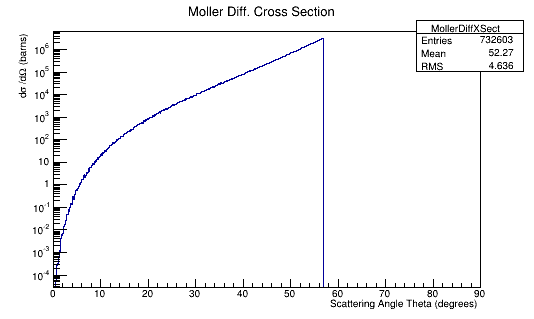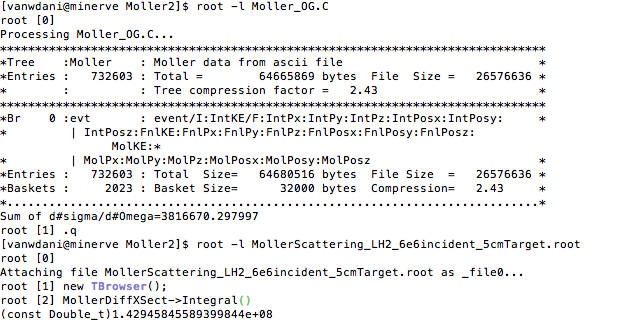Comparison of GEANT Simulation to Whitney Data
Jump to navigation
Jump to search
| Simulation | GEANT4(1cm target) | GEANT4(1cm target) | GEANT4(5cm target) | GEANT4(5cm target) | Whitney |
|---|---|---|---|---|---|
| Length of Target (cm) | 1 | 1 | 5 | 5 | 5 |
| 4E7 | 4E8 | 6E6 | 6E7 | 6E7 | |
| 1026940 | 10270829 | 771161 | 4826141 | 1001700 | |
| 975593 | 9757288 | 732603 | 4584834 | 951138 | |
| 217803 | |||||
| (s) | 1.3E-5 | 1.3E-4 | 9.57E-6 | 9.62E-5 | 9.54E-5 |
| Event Cross-Section (b) | 0.61 | 0.61 | 0.61 | 0.38 | 0.079 |
| Total Moller Cross-Section (b) | 0.58 | 0.58 | 0.58 | 0.361 | 0.075 |
| Individual Moller Cross-Section (b) | 5.95E-7 | 5.94E-8 | 7.92E-7 | 7.87E-8 | 7.88E-8 |
| Moller event rate per barn () | 1.68E6 | 1.68E6 | 1.26E6 | 1.27E7 | 1.27E7 |
Total dectector events occur for about 2.5% of the incident electrons on a LH2 target. We can assume that the Moller rate is 95% of the total event rate. We can assume the number of Moller events that occur within the DC range to be around 30% of the total Moller events occuring for the number of incident electrons for LH2 as well. Since the differential cross-section over the angel theta is proportional to the differtial cross-section over wire number we can dividing the Moller differential cross-section by the product of the density and length of the target material
If we were to integrate the Moller Differential Cross Section

